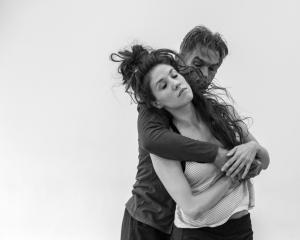
"Tai karaba te rabakau ba a kawa natimi, tibumi ao riiki aika imaira." Do not hide your knowledge; think of your children, grandchildren and generations to come. This I-Kiribati proverb could be applied to the whole swathe of arts and crafts from the Pasifika region, where art, culture, and identity are forever linked, and where time breaks free from strict Western linear concepts. Here there is the Ta-Va Time-Space Philosophy of Reality, circular and inclusive, the notion of va, and the harmony in sacred, interconnected spaces and relationships.
The voices in this book are saturated with these ideas. Divided into 11 chapters ranging through space, time, themes and practices, Pacific Arts Aotearoa is a hugely impressive culmination of years of work, showcasing many decades.
Edited by Lana Lopesi, it spans early beginnings in Aotearoa of recognised endeavours in the arts, growing strengths and visions, individual and collective philosophies for artmaking and being, and the place of politics, as well as ways forward. Lopesi terms the collection an "anti-history", where decolonisation threads through much of the work, but in other parts, colonialism is not so much cast aside as entirely irrelevant.
A total of 128 artists share their personal stories. There is endless variety across spoken poetry and the written word, live theatre, fine arts, dance and performance, photography and graphic arts, and traditionally based crafts and practices.
Art is embedded in family and community lives. Creations are proud declarations of standing in the world and of the continual melding between futures, presents, and pasts.
Collectives feature strongly in this anthology. These may be primarily artistic, or merge political and other purposes, as prominent in theatre and live performances — for instance Legal Street Productions and Pacific Underground. Rather than wait for doors to open in Aotearoa or elsewhere, these actors and artists symbolically build their own fale aitu, houses of spirits, full of their own meaning and power.
There are artistic practices as family, such as the Vaeau Family Studio, practising tatau within their own cultural space. Other collectives allow specific groups to retain and develop their traditional skills while in the diaspora, where the church can be a microcosm. There is strength in collectives, such as the Niuean Handcraft Group and the cross-Pasifika Pacific Sisters, and the related Samoan proverb of joining the hibiscus fibre to fibre. Each story is accompanied by vibrant photographs of the artists and their work. Visual and written share the stage equally, both animated.
Lopesi’s essays at the beginning of each thematic chapter are erudite and detailed. In the first, the reader learns of "early outliers" who laid some of the groundwork for others. Lopesi then moves through from a chronological account to philosophical preoccupations and spiritual worldviews, before delving into broad artistic practices. Finally, she looks to the future, to new Pacific questions of place, identity, and representation, and how it all circles back to the past.
This project has been hugely ambitious, packed full of inspiring projects. Vibrancy, enthusiasm, and joy beam out of these pages. It is a great pity that Pacific Arts Aotearoa is not on the Ockham shortlist for Illustrated Non-Fiction. This would be a worthy winner if ever there were one.
Jessie Neilson is a University of Otago assistant librarian.











